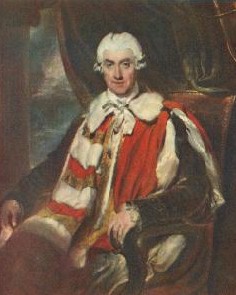
Back توماس ثين مركيز باث الاول ARZ Thomas Thynne, 1. markýz z Bathu Czech Thomas Thynne, 1. Marquess of Bath German Thomas Thynne (1er marquis de Bath) French Thomas Thynne, I marchese di Bath Italian トマス・シン (初代バース侯爵) Japanese Thomas Thynne Malagasy Thomas Thynne (1. markiz Bath) Polish Тинн, Томас, 1-й маркиз Бат Russian Thomas Thynne, 1:e markis av Bath Swedish
The Marquess of Bath | |
|---|---|
 Portrait by Thomas Lawrence | |
| Secretary of State for the Northern Department | |
| In office 7 March 1779 – 27 October 1779 | |
| Monarch | George III |
| Prime Minister | Lord North |
| Preceded by | The Earl of Suffolk |
| Succeeded by | The Viscount Stormont |
| In office 20 January 1768 – 21 October 1768 | |
| Monarch | George III |
| Prime Minister | |
| Preceded by | Henry Seymour Conway |
| Succeeded by | The Earl of Rochford |
| Secretary of State for the Southern Department | |
| In office 9 November 1775 – 24 November 1779 | |
| Monarch | George III |
| Prime Minister | Lord North |
| Preceded by | The Earl of Rochford |
| Succeeded by | The Earl of Hillsborough |
| In office 21 October 1768 – 12 December 1770 | |
| Monarch | George III |
| Prime Minister | The Duke of Grafton Lord North |
| Preceded by | The Earl of Shelburne |
| Succeeded by | The Earl of Rochford |
| Lord Lieutenant of Ireland | |
| In office 5 June 1765 – 7 August 1765 | |
| Monarch | George III |
| Preceded by | The Earl of Northumberland |
| Succeeded by | The Earl of Hertford |
| Personal details | |
| Born | The Hon. Thomas Thynne 13 September 1734 |
| Died | 19 November 1796 (aged 62) St George Hanover Square, Westminster, Middlesex, England |
| Political party | Tory |
| Spouse | |
| Children | 6, including: |
| Parents | |
| Residence | Longleat |
| Alma mater | St John's College, Cambridge |
| Occupation | Politician |
Thomas Thynne, 1st Marquess of Bath, KG, PC (13 September 1734 – 19 November 1796), of Longleat in Wiltshire, was a British politician who held office under King George III. He served as Southern Secretary, Northern Secretary and Lord Lieutenant of Ireland. Between 1751 and 1789, he was known as the 3rd Viscount Weymouth. He is possibly best known for his role in the Falklands Crisis of 1770.